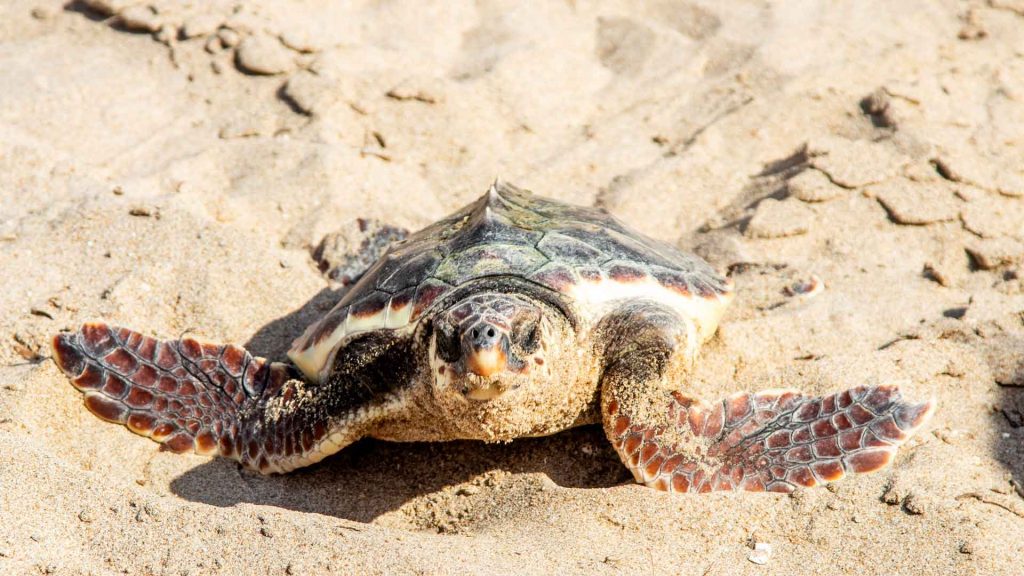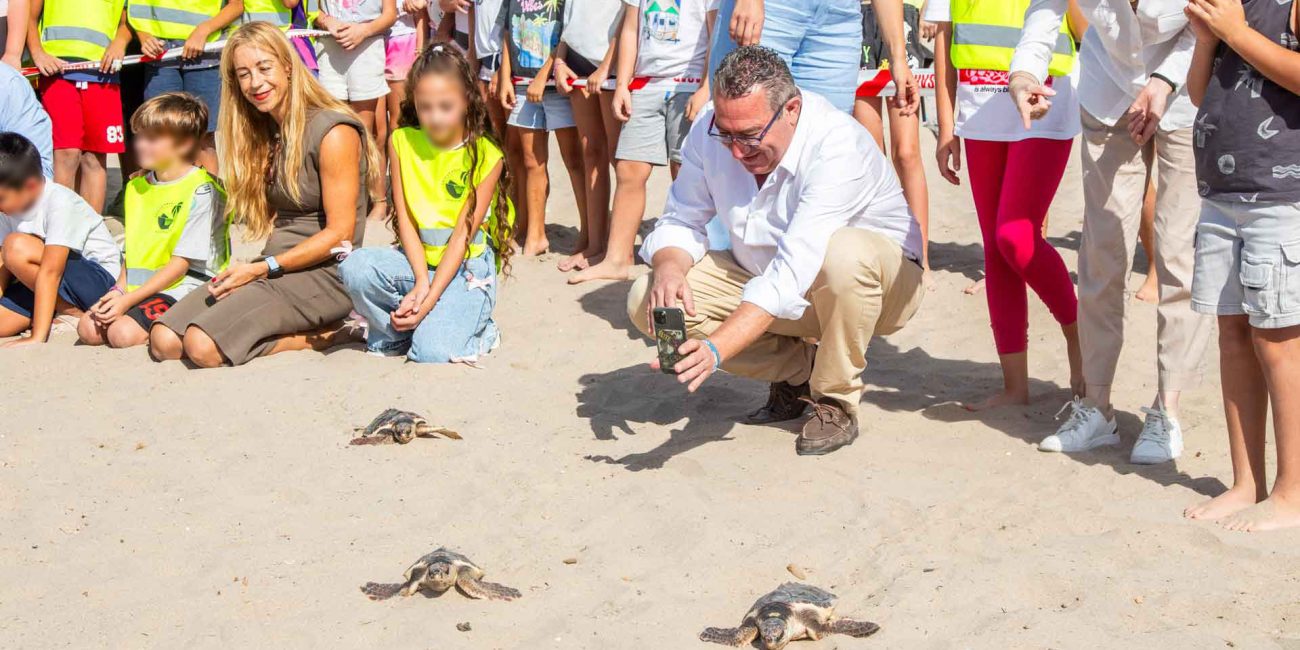Yesterday afternoon, September 25th, nine loggerhead sea turtles (Caretta caretta) returned to the sea at Benidorm’s Poniente Beach, where their mother had chosen to nest and lay her eggs last August. Dozens of schoolchildren from three public schools in Benidorm, as well as local residents, tourists, beachgoers, city and Oceanogràfic Foundation representatives, and representatives from various companies and concessionaires involved in beach management and the environment, witnessed the tiny turtles’ return to the sea. The event, which was part of the celebrations commemorating World Tourism Day, was emotional and featured an educational component that taught children and adults what to do if they come across a sea turtle on the beach and how to safeguard it until specialised professionals arrive.
Toni Pérez, Mayor of Benidorm, was joined by Mónica Gómez, Councillor for Beaches and the Environment, and other municipal council members in this turtle release, as were schoolchildren from La Cala, El Murtal, and Bautista Lledó schools, nine of whom were directly involved in returning the tiny hatchlings to the sea.

“Loggerhead turtles choose sites with healthy sand and very clean seas to lay their eggs, and that’s why they chose Benidorm,” the mayor told the students, reminding them that the mother of the hatchlings that returned to the sea today made her nest in Poniente in August 2024, and another turtle chose Levante beach to lay her eggs in August of this year. “For two consecutive years, they’ve chosen Benidorm, which says a lot about our beaches and our city and something that should make us feel very happy and proud,” according to him.
As you may recall, the occurrence took place in the early hours of the morning in the Poniente area, when the mother turtle laid 27 eggs before returning to the sea. Several witnesses swiftly alerted the local police, who activated the routine for such occurrences and immediately marked the turtle’s nest a few metres from the coast. Technical personnel from the Cavanilles Institute of Biodiversity and Evolutionary Biology of the University of Valencia and the Oceanogràfic travelled to Benidorm to recover the turtle’s eggs laid in its nest and transport them to the latter’s facilities, where they were incubated and the nine specimens were eventually born, which were released back into the sea today.
The significance of releasing turtles on their native beaches
Professionals at the Oceanogràfic Foundation explained that these nine turtles have been part of the institution’s “head-starting” program, which consists of temporarily hosting all Caretta caretta hatchlings born on Valencian Community beaches during the summer. These neonates continue to receive specialised care at Oceanographic facilities during their first months of life, a vital period in which they are exceedingly vulnerable.
Thanks to this assistance, the turtles grow larger and stronger before being released into the sea, enhancing their chances of survival in the wild.
Poniente Beach was chosen for the release not by chance; it is the same region where the turtles were born, and the principle of philopatry has been followed, which is a biological behaviour in which adult females return to the same area decades later to breed.
So far in 2025, twelve loggerhead turtle nests have been identified along the Valencian coast. Nests have been discovered in Castellón (Almassora, Nules, Alcossebre, and Peñíscola), Valencia (El Puig and Piles), and Alicante (Dénia, Elche, Benidorm, and El Campello).
This statistic places 2025 among the years with the most documented nestings in the Valencian Community, confirming the coast’s position as a critical location for species colonisation in the western Mediterranean.
This is especially relevant given that the loggerhead turtle is classified as Vulnerable on the IUCN Red List due to the numerous dangers it confronts, including loss of nesting beaches, pollution, accidental capture, and the effects of climate change.









No Comment! Be the first one.